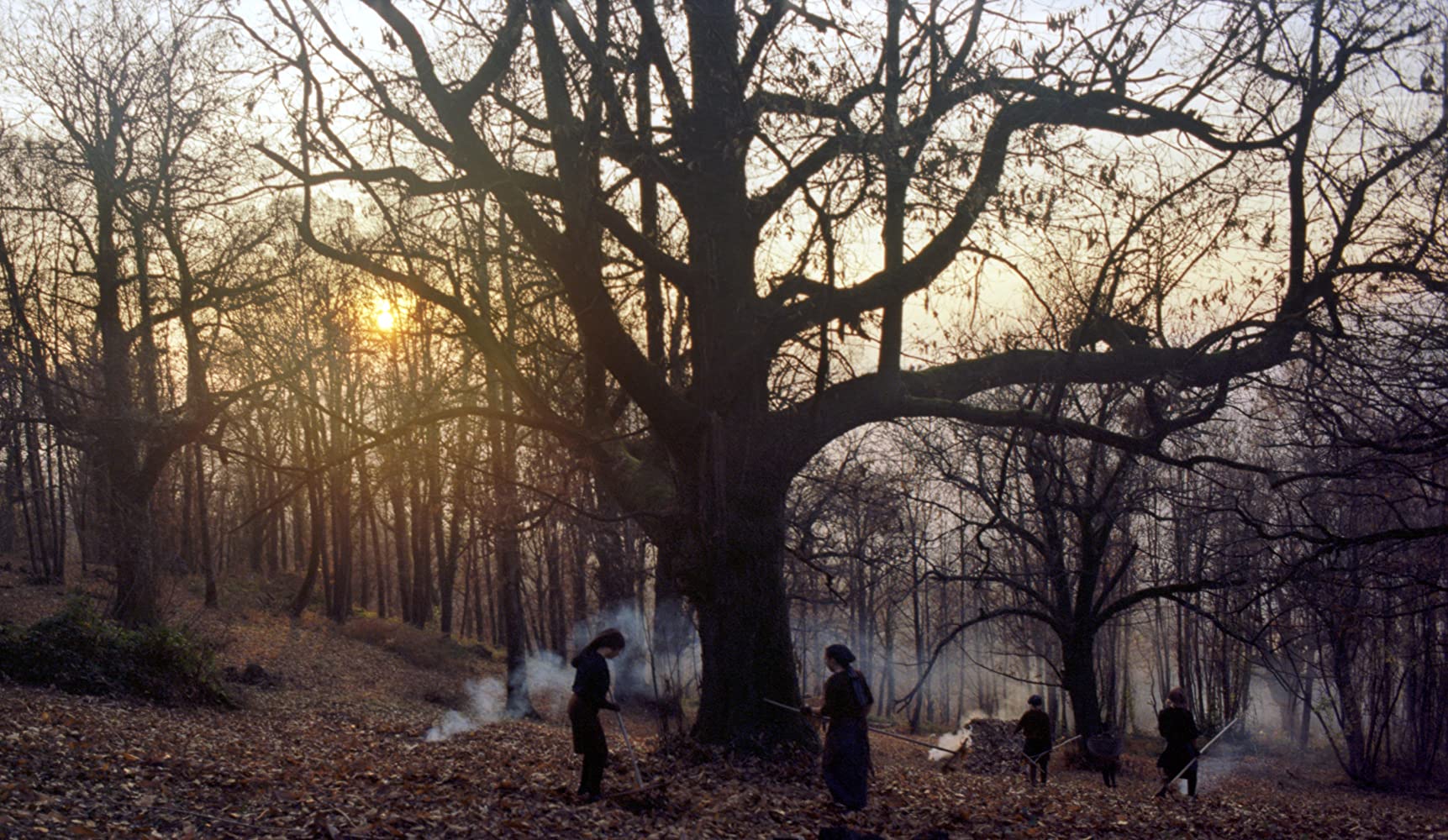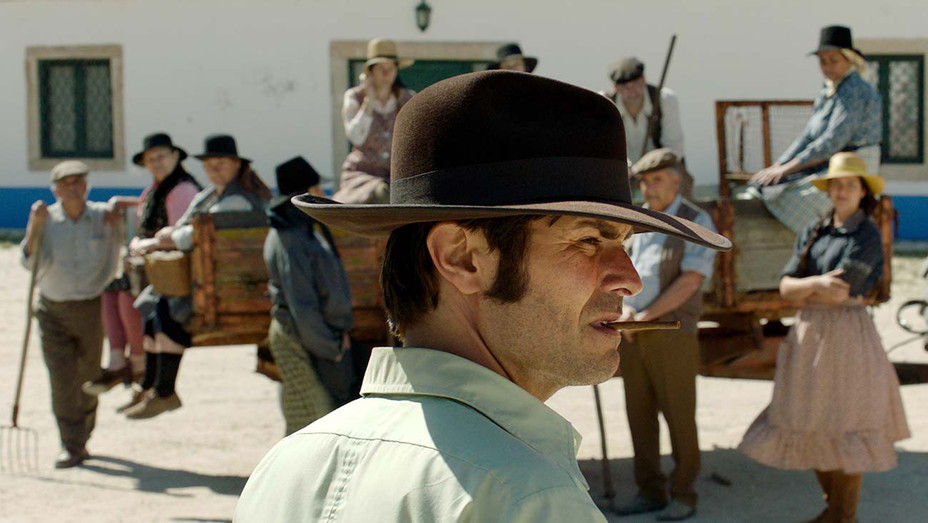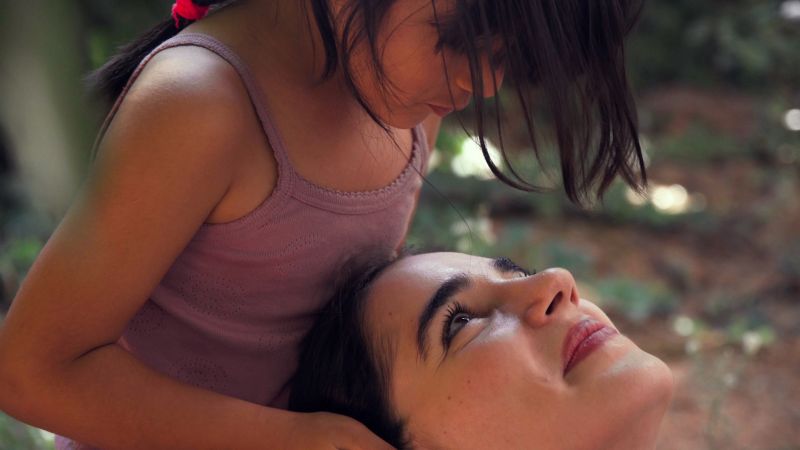Threats to Our Planet and the Lives of Its Inhabitants
in 33rd Panorama of European Cinema, Athens
by Sharon Hurst
We live in a world of constant change with threats to traditional ways of life we thought might never die. And mixed up within this impermanence is the global cataclysm involving displacement of people from their homes, scattering and fleeing to all parts of the globe.
What has struck me in several of the excellent films I’ve been privileged to help judge this year, are the two recurring themes of environmental threat and human displacement.
Capitalism touts progress as the holy grail; but Digger (directorial debut from Giorgis Grigorakis, 2020) paints a more ambivalent picture. The narrative focuses on Nikitas, now in his mid-sixties, and living in a run-down home in the northern mountains of Greece, a place of majestic, towering trees and long-standing forests. He’s content with his horse, his chickens and his modest way of life. But a mining company is making increasingly lucrative offers to buy him out. Furthermore, his estranged son Johnny turns up, claiming his share of the property left to him by his recently deceased mother. So ensues a battle of wills between father and son, but also between the village folks. Needing to make a living, some locals seek employment from the company; others support Nikitas’s view that the mountain way of life and the forests must be protected from destruction. The director never takes sides simply leaving us to make up our own minds.
In The Last Ones (Viimeist, 2020), the mining company is again the face of the bad guys. Up in the bleak tundra of Finland/Lapland an old man barely subsists with his few scruffy reindeer. The miners want him gone, and hope his son Rupi can talk him into selling his land. Again the theme of a traditional way of life vs capitalist expansion takes centre stage; again the film has many other layers, one being a triangle of lust centred around Riitta, the barmaid.
Stories from the Chestnut Woods (Zgodbe iz kostanjevih gozdov, 2019) plays like a stream of consciousness in which memory and the present interweave, but at its heart is also a fast-vanishing way of life. A carpenter and a chestnut harvester live in the woods which are a natural border between east and west, Italy and Slovenia, just after World War 2. Both have lost loved ones and seem to live in a time bubble of a fast-vanishing world. Like Digger, this film also features some spectacular cinematography highlighting the timelessness and splendour of age-old forests.
All three afore-mentioned films, especially Digger and The Last Ones highlight possibilities of redemption in terms of relationships, but can there be any redemption for the natural world?
Another dying way of life is that depicted in the Portuguese film The Domain (A Herdade, 2019). An epic, just short of three hours’ runtime, it traces the history of a huge wine estate in northern Portugal. With a backdrop of the political upheavals over the years, we see too that this semi-feudal way of life, with an autocrat at the head, could also be disappearing, but maybe that’s a good thing.
Who Will be Eaten (Ποιος, ποιος θα φαγωθεί, 2020), the stunning debut from young filmmaker Elpiniki Voutsa-Rentzepopoulou, is about cannibalism of a different ilk – how the system chews up young refugee children, and whether the hard work and good intentions of crisis workers can make a difference. The protagonist Danai visits her cousin Konstantinos. He works for a refugee shelter in Athens and hopes she will participate. Danai bonds with a young Afghani refugee girl, but somehow finds the pressure of the self-sacrifice in helping almost too much to bear. She craves the normal life of a young person. Exquisitely shot, the film is something fresh and new, and with multi-layered and nuanced levels of meaning, it surely deserves the top award we’ve given it.
Daniel 16 (Ντανιελ ’16, 2020) speaks to alienation, loneliness and the refugee crisis, especially in Greece. The plot draws upon a true program in which delinquent offenders are sent from Germany to a farm in northern Greece near the Turkish border. In this part of the world, desperate refugees try to cross the river Evros, where many drown. Daniel is hostile, aggressive and lonely, but when he stumbles across Nidal, a little Syrian boy hiding out in an abandoned building after the death of his father, he finds a purpose in life – to be a protector and provider for the frightened child. Although the story’s main focus is Daniel, and the refugee situation is not laboured, it is there as a constant disturbing backdrop.
Listen, a short, sharp and harrowing feature, traces the brutal treatment of a Portuguese family who are living and working in London and struggling to make ends meet. When their young deaf daughter loses her hearing aid, misunderstandings arise and Social Services suspect maltreatment. The family are then in a battle for their lives to stop welfare taking the three kids away. Though not strictly a refugee story, it still highlights alienation, struggle and dispossession.
I was also blown away by two features common to nearly all the films – the magnificent cinematography, and spectacular music soundtracks, both of which strongly support the narrative. In Who Will be Eaten, it is the eastern strains of distinctive Afghani instruments, along with a haunting string refrain; in or Digger the evocative Greek sirtaki music danced to in the local taverna which may soon be disappearing from Nikitas’s world. Visually, hardly one film finished without my exclaiming “Now that was a stunning shot!”
I revelled in upward-looking shots through majestic forest canopies, broody atmospheric scenes of fog and vast emptiness, revealing close-ups of faces in joy or emotional pain. The work of the cinematographers has served to put the audience squarely in the picture and in the emotions and settings of the characters.
Of course I could eulogise as to how in each and every film the quality of the scripting and the performances was memorable, but that’s for another article. Suffice to say that these films powerfully reflect Europe’s struggle with some very weighty issues, with no easy resolutions.
Sharon Hurst
© FIPRESCI 2020






